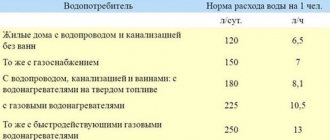Official Text of the Federal Dog Walking Law of 2021
On December 28, 2021, Federal Law No. 498-FZ, entitled “On the Responsible Treatment of Animals and on Amendments to Certain Legislative Acts of the Russian Federation,” . This regulatory document was submitted for consideration more than 5 years ago, but its approval took a long time, since many points were criticized and heatedly discussed.
The adopted act is valid from January 1, 2021 , but works partially, since some of its provisions became legal with the onset of 2021. For the current period of time, this particular regulatory act is the main regulation defining the requirements for keeping pets and service dogs at home, and in addition, delimiting the areas of responsibility of the federal government and the constituent entities of the Russian Federation.
In addition to Federal Law No. 498-FZ, the following remain in force:
- “Rules for keeping dogs and cats in cities and other populated areas,” adopted in 1981;
- Law of the Russian Federation No. 4979-I of May 14, 1993 “On Veterinary Medicine”;
- Federal Law No. 52-FZ of March 30, 1999 “On the sanitary and epidemiological welfare of the population”;
- Legislative acts of the constituent entities of the Russian Federation concerning interaction with animals living at home and defining the rules for their maintenance.
Where is it legal to walk your dog?
Federal Law No. 498-FZ notes that uncontrolled walking is possible in any places except the following areas:
- roadway;
- courtyard area of a multi-storey building;
- playgrounds;
- elevator, flight of stairs and other common areas of a multi-story residential building;
- areas designated for sports.
Also this regulatory document in paragraphs. 3 clause 5 art. 13 contains information that it is local authorities who determine the areas allocated for walking. Part 2.4. Section 2 of the “Rules for Keeping Dogs and Cats” , in addition to the above, the law supplements the list of prohibited places for dogs to be found, walked and taken care of. These are shops, canteens and other public access points.
In paragraphs 3.2. Clause 3 of the same regulatory document notes that walks are allowed exclusively within specially designated zones, or, in their absence, in vacant lots and other areas provided by local authorities.
What does it mean if there is a sign hanging - “Dog walking is prohibited”
No Dog Walking ” or “ No Dogs Allowed signs are often found near parks, shops and just local areas. However, it is not always legally binding. Federal regulations provide for a number of zones where the presence of dogs should be limited or completely prohibited.
Also, the regulatory document No. 498-FZ dated December 28, 2018 notes that walking areas are determined by local governments.
These points mean that areas that can be equipped with a “No Dog Walking” are determined by the authorities of the locality or region. Regulatory documents establishing permissible and limited territories may determine the procedure for keeping or walking dogs, their presence in green areas, shops, areas of educational institutions, etc.
If a park or other recreational space is included in the list of dogs prohibited for walking, the administration of the locality has the right to install a restrictive sign in front of its entrance.
Children's or sports grounds, school grounds and hospitals are equipped with the same signs. Penalties for non-compliance with the walking regime vary, their size is determined by local authorities.
Rules for walking in public places
Regulatory Act No. 498-FZ of December 28, 2021 stipulates that the main conditions when choosing a dog walking point should be:
- Ensuring the integrity of the property of individuals and organizations;
- Safety for the health of others and animals.
The Federal Law also states that the owner cannot allow the pet to move uncontrollably in areas that are prohibited for its free presence. On the territory of these places, the owner is obliged to control his behavior and actions. Starting from 2021, special requirements will be imposed for being on the street with a potentially dangerous dog and a list of breeds that belong to this category will be determined.
“ Rules for Keeping Dogs” of 1981 supplement the information on the procedure for walking animals and require the exercise to be carried out between 7 a.m. and 11 p.m. The rest of the time, as indicated in paragraphs. 3.3. Clause 3 of the document, it is allowed to be with a pet on the street, but it is required to ensure that it remains quiet.
This regulatory act also contains the following requirements for walking pets:
- Presence on a dog older than 3 months. a shortened leash and a muzzle when leaving the yard or approaching the area designated for walking;
- The presence of a tag indicating the license plate number on the dog’s collar;
- The ability to free the dog from the leash and collar if the walking area has a special fence;
- The sober state of the animal owner while being with him on the street.
pp. 2.2. Clause 2 of the “Rules for Keeping Dogs” and part 3 of clause 5 of Federal Law No. 498 states that the pet owner is obliged to keep the sidewalk, street and walking area of the pet clean after the pet’s actions, promptly clearing the area of excrement.
Separate regulations of the constituent entities of the Russian Federation establish more conditions when a dog is with its owner on the street. For example, Decree of the Government of the Sverdlovsk Region No. 743-PP of 2004 provides for the following additional requirements:
- Free walking of a dog on the territory of a private household, if it is well fenced and there is a warning sign about the presence of a dog;
- Availability of an accompanying person looking after the animal;
- A ban on being on the territory of cultural and educational institutions, as well as the obligation of owners of organizations to warn the owner of the dog about the inadmissibility of its presence using a special sign;
- The presence of a leash when present in a residential area, and its shorter condition when passing in a public place, as well as the presence of a muzzle;
- Prohibition on walking dogs that pose a danger to citizens, children under 14 years of age , as well as those in a state of intoxication.
Law N 191/2014-OZ of the Moscow Region “On improvement in the Moscow Region” dated December 30, 2014 prohibits being with a dog in areas allocated for landscaping if they are intended for citizens’ recreation.
The document also establishes the specific height of the fence for the walking area ( 2 m ), determines whether it is filled with landscaping elements, its area ( 400-800 sq.m. ), distance from buildings ( 25-40 m ), and prescribes coverage parameters. The age of the accompanying dog on the street should not be less than 12 years (if the animal is large - 14 years ).
How can you make money walking dogs?
This way of earning money does not require large investments. The main thing in this business is love for our smaller brothers and self-organization skills. This type of income can be considered as a part-time job, as well as a main activity if you want to create your own business network. For these reasons, this method of earning money is suitable for both beginning entrepreneurs and retired students.
Start-up investments
To start such a business you will need no more than 25 thousand rubles. This amount is formed from the costs of registering an individual entrepreneur and obtaining insurance, purchasing equipment, advertising on social media. networks and flyers, as well as creating a simple website.
Potential income
The price of services varies depending on the city and the weight of the dog. The cost of services will be higher for large dogs than for small breeds. In Moscow, the average price for walking small pets will be about 300 - 400 rubles/hour. In turn, a walk with large dogs will cost 600 - 700 rubles/hour. As a service for an additional fee, dog training can be provided, which will cost about 300-400 rubles, depending on the breed. Many companies also offer comprehensive post-walk care, including paw washing and feeding.
Thus, this type of income can bring from 700 to 1500 rubles for a couple of hours of work per day. Sometimes dog walkers will take several dogs for a walk at the same time if they get along with each other. It is prohibited to walk more than two large dogs of fighting breeds at the same time. Mass walks are relevant for small dogs.
Before setting your prices for walking, get acquainted with the offers of potential competitors. Study the market in your city and create your price list. If you're interested in learning about other ways to make money, check out the best small town business ideas.
What is the fine for walking in the wrong places?
The size of the fine for walking on unauthorized territory differs in different regions of the federation. The specific amount is determined by the Code of Administrative Offenses of the constituent entity of the Russian Federation, and not by the federal government.
Each region independently establishes the level of responsibility for the administrative act performed. The amount of fines for some constituent entities of the Russian Federation is presented in the table:
| Name | Size, rub. |
| Moscow | 1 000-2 000 |
| Saint Petersburg | 2 000-4 000 |
| Altai region | 500-10,000 (determined by the category of person - individual, official or legal) |
| Krasnodar region | 1,000-5,000 (different for citizens and employees performing professional duties) |
| Magadan Region | 1 000-20 000 |
| Tula region | 1 000-3 000 |
In some regions, the amount of the fee for the act is doubled for repeated violations.
Is it possible to carry a dog in transport (Train, plane, public)
According to the “Rules for Keeping Dogs and Cats” of 1981, it is permissible to transport a dog in any vehicle, but this requires compliance with a number of conditions:
- The animal has the necessary veterinary passport;
- The presence in this document of a rabies vaccination mark (vaccination must be carried out no earlier than 30 days and no later than 1 year before the date of travel);
- Compliance with carrier requirements.
The presence of dogs on public transport is regulated by the resolution of the locality in which the carrier operates.
For example, Moscow regulations provide for the possibility of transporting a dog in the rear of a rolling stock if it has a collar and muzzle, while its presence must be paid in an amount equal to baggage allowance. A small dog can be placed in a container no more than 120 cm in total and travel with it free of charge.
Government Decree “On approval of the Rules for the transportation of passengers and luggage by road and urban ground electric transport” No. 112 dated February 14, 2009 describes the conditions for transporting dogs in intercity buses and taxis. In the first case, you need to place the animal in a cage with a total size of up to 180 cm with a solid bottom, and pay for its presence.
It is allowed to carry a dog in a taxi wearing a muzzle and a leash, as long as there is bedding. A mandatory condition for transportation is that the driver can safely control the vehicle, as well as the animal not blocking the mirrors.
Transportation of a dog by plane is carried out according to the rules of a specific airline and requires prior notification of the event.
The organization has the right to limit the possible weight of the pet and make requirements for the cage and carrier. Dogs travel in a container placed in the luggage compartment, or in some cases, in the cabin.
Guide dogs and service dogs are usually allowed to be transported without a crate, but this is only permissible if they are muzzled and have a leash, as well as documents confirming the dog's status.
Where to start running a dog walking business?
Every business has its own characteristics. Before you start implementing an idea, you need to get acquainted with all its aspects in order to take into account all possible nuances when starting.
What you need to know about a dog walking business
There are some things to know about this business that you need to know before you start walking dogs for money. Let's look at a few basic ones.
Firstly, this business requires a lot of free time. If you decide to make it your main job, expect to work on weekends as well. That is why, when opening such a business, you need to be able to competently organize and plan your life. Things are completely different over time if you consider dog walking as a part-time job and hobby. For example, a dog walking job for teenagers can provide extra income while studying.
Secondly, before you go on your first walk with your tailed companion, do not forget to familiarize yourself with the legislation. A dog is not only private property, but also a subject of civil rights. When you take your pet for a walk, the responsibility for its life and health falls on your shoulders. In addition, there is a general set of rules that must be followed to avoid fines. For example, there are special areas for walking dogs. You cannot walk dogs on the grounds of schools, kindergartens and hospitals. Large dogs should only go for walks wearing a muzzle. Each region has its own rules.
What documents are needed to open this business?
To organize such an activity, a small number of documents are required: TIN, OGRN to confirm your status as an individual entrepreneur, a contract for the provision of services. Additionally, a certificate of completion of canine or veterinary courses may be required.
| Registration of individual entrepreneur or LLC | A mandatory part for starting any business. In this case, registering an individual entrepreneur will be less expensive and more expedient than an LLC. |
| Contract for services | Before you start working with clients, draw up a service agreement. Samples of a standard contract can be found in the public domain. To avoid mistakes and take into account all the nuances of your business, it is better to seek help from a lawyer. |
Download a free sample dog walking agreement with an appendix.
What knowledge is required for the job?
In addition to organizational skills and a great love for animals, you will need to study a number of specialized literature.
What is it for? There are different breeds of dogs, and while small animals can be handled fairly easily, large ones can cause a lot of trouble. You must be aware of your responsibility before you start walking dogs for money. You need to know the behavioral characteristics of dogs, understand the breeds, and also be able to provide emergency assistance to your four-legged friend. To do this, you can read books on veterinary medicine.
Civil, administrative and criminal liability for violation
Criminal prosecution of an animal owner who violated the rules for walking a pet is possible if this resulted in serious harm to the victim’s health. Responsibility for this act is provided for in Art. 118 of the Criminal Code of the Russian Federation and has one of the following consequences:
- Fine 80,000 rubles. or the amount of wages for up to 6 months. ;
- Restriction of freedom up to 3 years ;
- Arrest up to 6 months ;
- Carrying out work (mandatory - up to 480 hours , corrective - up to 2 years ).
If the violation was committed by a person performing his official duties, the penalty becomes more severe.
According to paragraph 1 of Art. 1085 of the Civil Code of the Russian Federation, the owner of the animal will have to compensate for the harm caused to the victim, including lost earnings that he could have had, as well as the amount spent on medical care.
In addition, the victim of the dog’s actions may demand compensation for moral damage if it is proven in court that the event had a strong impact on his condition.
Administrative fines are set by local authorities. Their size differs depending on the locality. For example, in Moscow the following responsibilities are established:
| Act | Amount of fine, rub. |
| Contamination with excrement if the owner has not removed it | 1,000-3,000 (different amount for individuals and officials) |
| Violation of walking rules (visiting prohibited areas, lack of a muzzle or leash) | 1 000-2 000 |
| Presence with a dog in green areas without a leash | 1 000-3 000 |
| Failure to comply with walking rules, resulting in an attack on another animal (wild or domestic) | 4 000-5 000 |
| Baiting | 2 000-10 000 |
| Assault on a person causing harm to health (except serious) | 4 000-16 000 |
| Damage to property of others | 500-10 000 |
It should be noted that at the scene of the offense a protocol can be drawn up about this event indicating all the facts. The fine is not collected immediately; this is possible only after the relevant decision is made by the law enforcement agency.
Responsibility: procedure for involvement and basis
Responsibility for violating the rules for keeping dogs is represented by 3 types:
- Civil.
- Administrative.
- Criminal.
To attract each of them, a separate procedure and grounds are provided.
Civil
Every citizen or organization can file a claim in court for compensation for material damage caused to health, life or property as a result of an animal attack. In addition to material damages, such claims may also result in compensation for moral damages.
Important! No matter who walks the dog, the owner is responsible for it. Therefore, if she bites someone or damages someone’s property, he will have to pay the bills, and not the one who walked with her.
Administrative
Administrative sanctions are set at the local level, so the size of the fine may vary in each region. If we talk not about the size, but about the type of punishment, then it is still the same throughout Russia - it is a fine.
The basis is a violation of the rules for keeping and walking dogs, even if no one was injured as a result. That is, the consequences are not important - the fact of the violation itself is important. This may include walking without a muzzle/leash, the animal staying in inappropriate places (playground, dining room, etc.), disturbing the silence after 11 p.m., littering public areas with animal waste, etc.
Administrative liability is held in the following order.
STEP 1. Drawing up a protocol or order of violation by a competent person (animal control inspector in prefectures, local police officers, traffic police officers, veterinary service representatives, public inspectors).
STEP 2. Sending the drafted act to the administrative commissions created under territorial authorities (administrations, councils, etc.).
STEP 3. Based on the results of consideration of the protocol, a resolution or determination is made.
STEP 4. A copy of the decision made is given to the dog’s owner.
STEP 5. If he does not agree with the decision, he can file a complaint with the district court within 10 days from the date of its delivery or receipt. This stage can be considered optional, since the opportunity to appeal the decision is not always used by offenders. They often move straight to the next step.
STEP 6. Payment of the fine at any bank according to the details specified in the resolution.
Criminal
The dog owner may be held criminally liable in the following cases:
- If the attack occurred due to negligence and caused serious harm to the victim’s health. Qualifies under Article 118 of the Criminal Code of the Russian Federation. The concept of “seriousness” is defined by clause 4 of the Russian Federation Regulations dated August 17, 2007 N 522. Harm is considered grave if it:
- hazardous to health;
led to loss of vision, speech, hearing, any organs as such or their functions;
- terminated pregnancy;
- caused mental disorder;
- led to permanent facial disfigurement;
- led to a permanent loss of general ability to work by at least one third;
- contributed to the complete loss of professional ability to work.
- If the owner deliberately set the dog so that it would cause harm to the life or health of the victim . Depending on the consequences that occur, it may qualify as Art. 105 (murder), Art. 111, 112, 115 of the Criminal Code (intentional infliction of grave, moderate or minor harm to health). The owner of the animal may be punished in the form of deprivation or restriction of freedom, arrest, forced labor, a fine, compulsory or correctional labor. Example. In real life, in the Tver region, a series of episodes took place when Sergei Andreev (a resident of Kuvshinovo) set an American Staffordshire Terrier on women. The court found him guilty and sentenced him to 6 years in a general regime colony. He was also ordered to pay 110 thousand rubles in moral damages to the victims.
- If the owner baited the dog, however, no harm was caused as a result of such actions. Theoretically, the owner can be held accountable for such actions under Article 119 of the Criminal Code of the Russian Federation (threat of murder or infliction of grievous bodily harm), but in practice this is very difficult to prove, so Russian courts have not yet passed such a sentence.
The sanction of the article provides for punishment in the form of a fine, compulsory or correctional labor, restriction of freedom or arrest.










